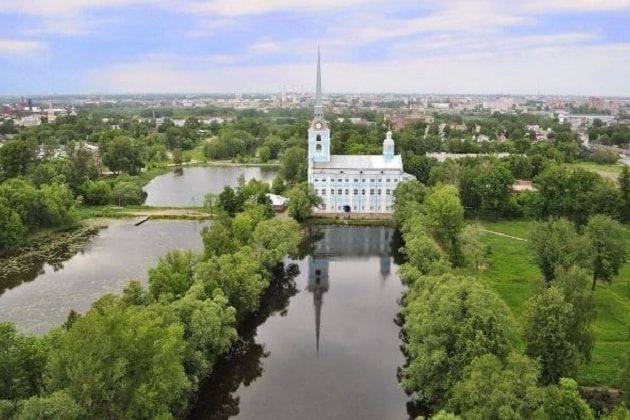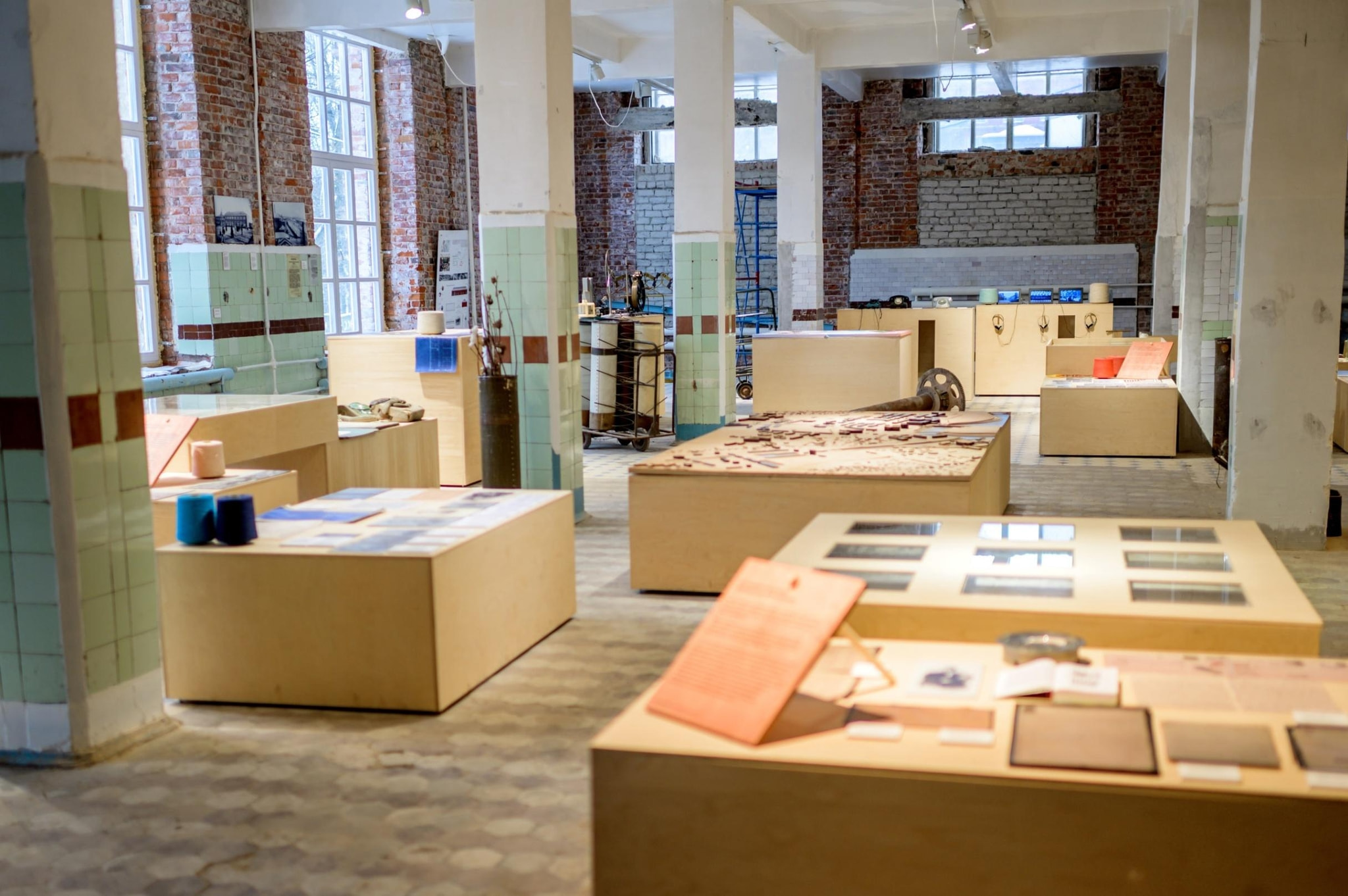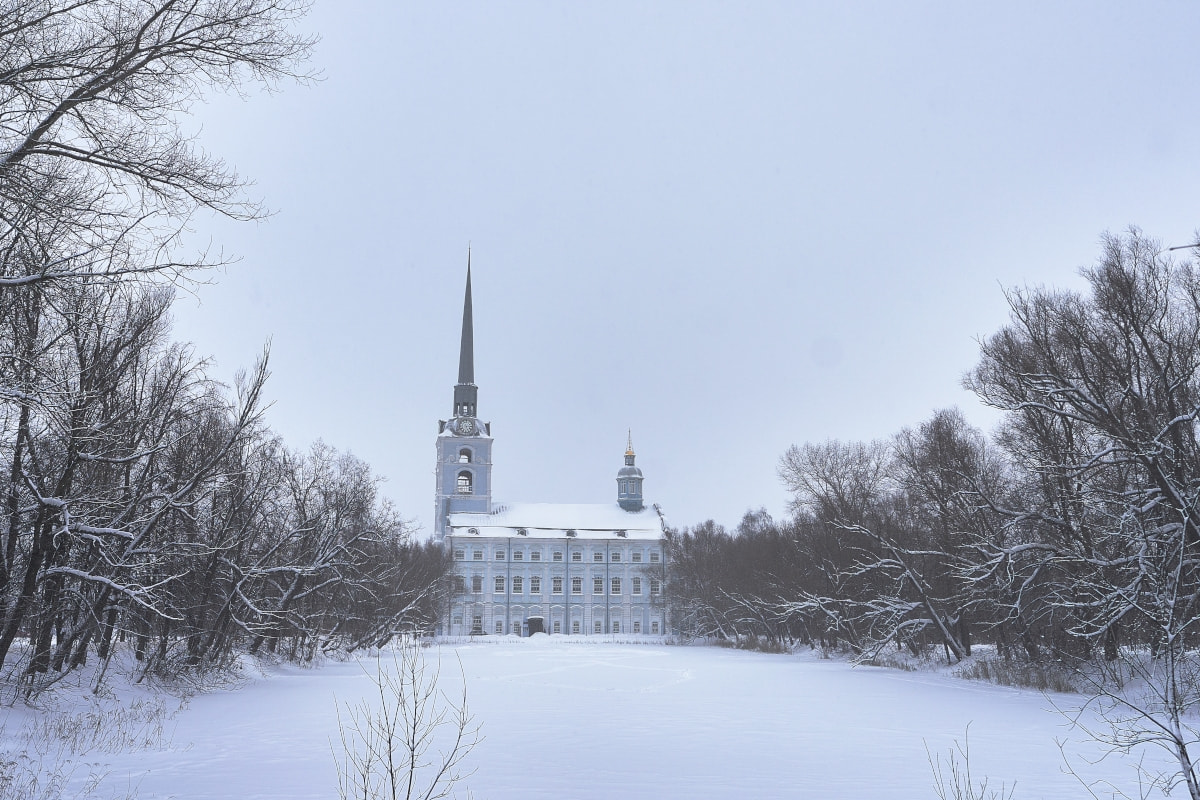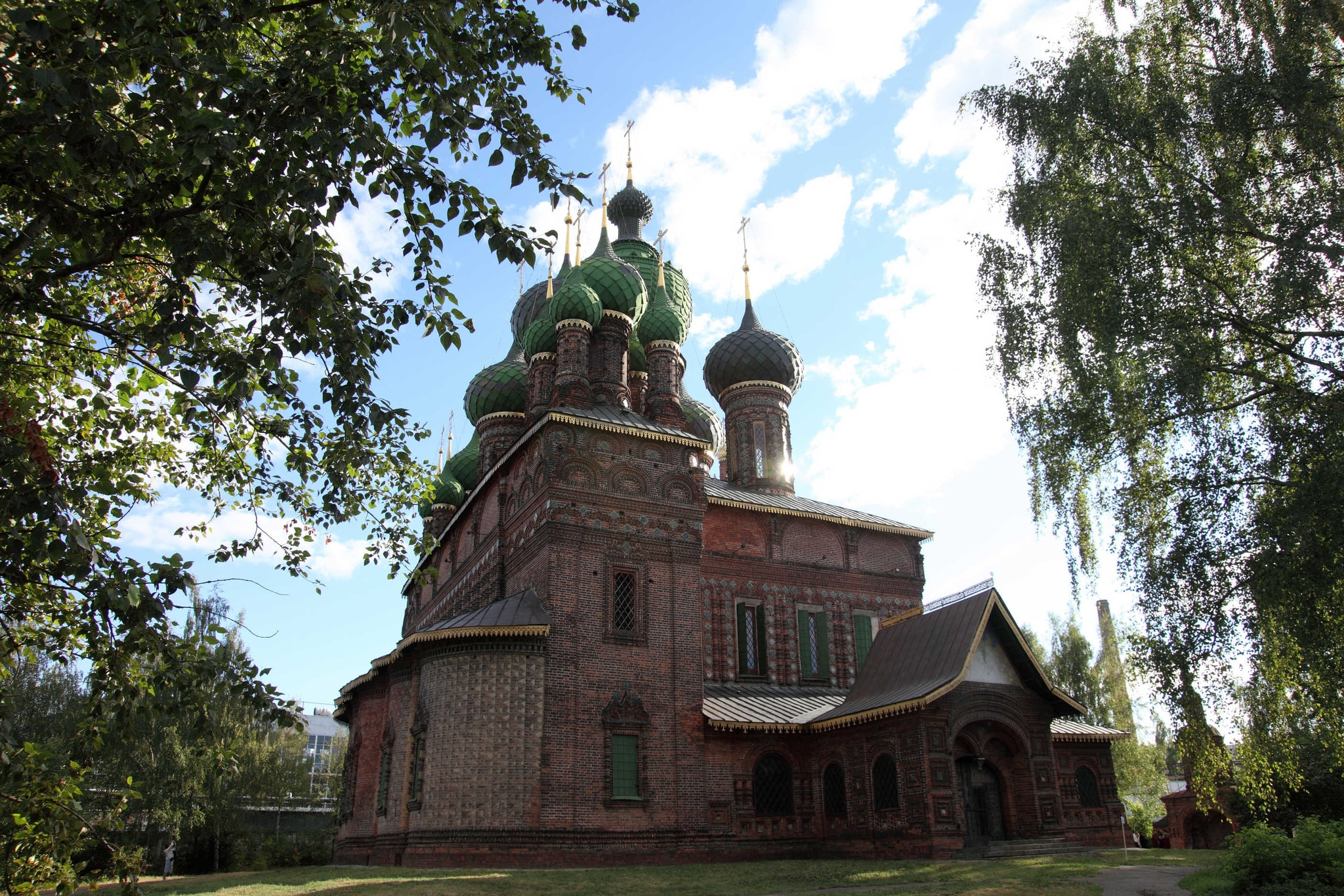Perekop: the second historical center of Yaroslavl
The territory of the present Krasnoperekopsky district is not without reason called the second starting point in the fate of Yaroslavl. It was here that the Yaroslavl Large Manufactory was founded in 1722, which marked the beginning of the history of the industrial city. The factory, founded under Peter the Great, continues to operate today – the Krasny Perekop combine became its heir. For all 300 years of its history, the company has not changed its profile and produced various types of fabric.
waypoints
1. Peter and Paul Park
- Ярославская обл., г. Ярославль, Петропавловский парк.
- 0 min
 photo: archive of the Ministry of Tourism of the Yaroslavl region
photo: archive of the Ministry of Tourism of the Yaroslavl regionThe place, which today is associated with walks and recreation, was originally formed as a production site.
The transformation of the local rather swampy lands is connected with the reforms of Peter I. By his decree, the first large industrial enterprise, the Yaroslavl Linen Manufactory, began operating in Yaroslavl. Its founders– the Yaroslavl merchants Zatapeznovs, received land on the Kavardakovsky stream (today Zelentsovsky), where they created the largest textile factory at the beginning of the XVIII century.
The eldest of the Zatrapeznovs' sons, Ivan, was taken by Peter I to Holland to study "canvas business". Returning to Yaroslavl, Ivan Zatapeznov brought here not only modern technology, but also European style. On the territory of the manufactory, he built a house and laid out a park in the Dutch style. The alleys of the park radiated from the common center like the rays of the sun, there was a wooden pavilion in the center, and fountains and sculptures were located at the intersection of the paths.
The factory produced linen, silk and cloth fabrics, as well as cheap fabric for mass demand, which was nicknamed shabby. She was going to make a house dress, trousers, mattresses. Clothes quickly wore out – hence the expressions "shabby dress", "shabby look".
During the construction of the manufactory, dams were made along the course of the Kavardakovsky stream for the work of watermills – this is how a cascade of ponds was formed. There are five of them in total. Fabrics were rinsed out on ponds outside the central part. And in the meadow, these canvases were bleached under the rays of the sun.
After the revolution, the Yaroslavl Large Manufactory was nationalized, and later, in honor of the victory of the Red Army at Perekop, the factory was named "Krasny Perekop". Petropavlovsk Park has long been called the Park of Culture and Recreation named after the XVI Party Congress. Its historical appearance has been lost.
2. Церковь Иоанна Предтечи в Толчкове
- Ярославская обл., г. Ярославль, 2-я Закоторосльная наб., д 69
- 0 min
An architectural monument of the XVII century.In the middle of the XVIII century, Ivan Zatrapeznov's younger brother, Dmitry, stood out from the family business and founded his own factory. His company began to be called the Yaroslavl Small Manufactory, and the factory on the territory of Petropavlovsk Park was named the Big Zatrapeznov Manufactory. In Yaroslavl, Dmitry Zatrapeznov also owned a bell foundry. At one time, bells were cast here for the bell tower of the Church of John the Baptist – one of the most grandiose temple complexes in the city, in the XVII century it towered over all the buildings of Yaroslavl, including the cathedral.
The church – whose full name sounds like the church in the name of the Beheading of John the Baptist – was built for a long sixteen years, from 1671 to 1687. For the construction of the temple, with the permission of Tsar Alexei Mikhailovich, two brick factories were specially built, where the main brick for the walls was made, as well as a special, lekal one – complex and diverse in shape. The brick was of such high quality that it did not require further whitewashing or plaster and at the same time retained its original appearance to the present day.
The Church of John the Baptist has no equal in the Christian world in terms of the number of paintings – according to various estimates, from one and a half to four thousand different subjects are depicted on its walls, pillars, vaults and galleries. One of the most unique paintings is the Orthodox calendar, which depicts saints and holidays in their honor in the format of a miniature book by month and day. This has never happened again in any temple. And according to the decision of the Bank of Russia, the image of a unique architectural monument was placed on a banknote with a face value of 1000 rubles.
In Soviet times, the church was used as a storage for dyes, acids, and carbide from the nearby Pobeda Rabochy plant, and a workshop and forge were placed in the lower tier of the bell tower. It was only in 1951 that the temple complex was returned to the jurisdiction of the Yaroslavl Museum-Reserve. It is open to the public from May to October.
3. Культурное пространство Textil
- Ярославская обл., г. Ярославль, ул. Стачек, д. 63
- 0 min
 photo: Сергей Кремнев / txtl.spaceCultural space and museum on the territory of the operating factory "Krasny Perekop".
photo: Сергей Кремнев / txtl.spaceCultural space and museum on the territory of the operating factory "Krasny Perekop".The Textil cultural space is located on the territory of the Krasny Perekop plant. Today it is both an industrial textile production and a post-industrial creative space. Members of the community are engaged in researching the heritage of the Yaroslavl Large Manufactory and hold various events for visitors.
In 2018-2019, the exposition "Factory Museum" was created in the former hall of steam engines of the current production "Krasny Perekop" and the audio performance "Radio Factory" was launched.
In 2019-2021, the Factory Circle project was implemented, which resulted in the creation of the Perekop audio program and the book Factory Circle. The memory of the place."
Reviews




